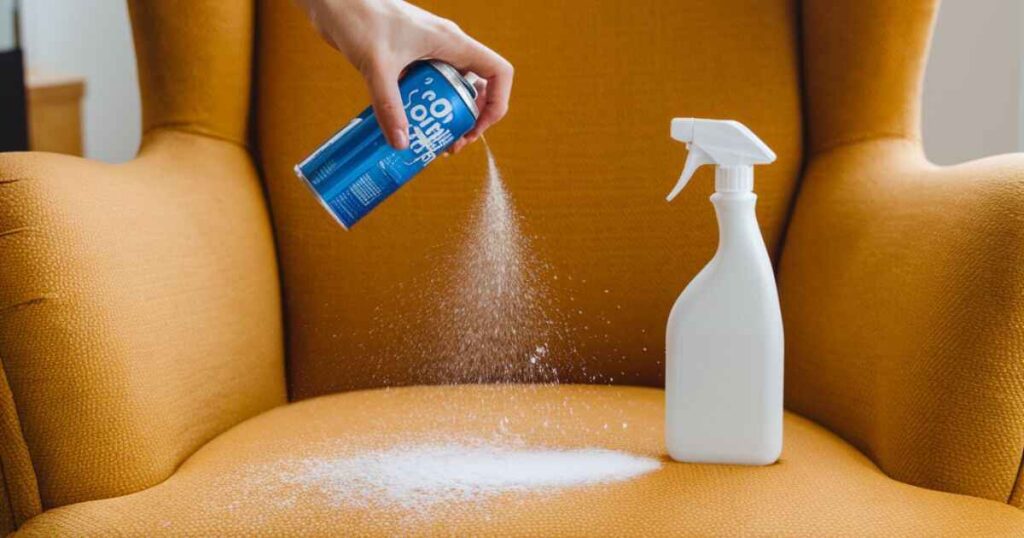In today’s fast-paced world, our homes serve as sanctuaries from the chaos outside. However, nothing can disrupt this tranquility quite like persistent odors emanating from our furniture. Whether it’s a musty old couch inherited from a relative or a new leather recliner that’s absorbed cooking smells, learning how to get smell out of furniture is an essential skill for maintaining a pleasant living environment. This comprehensive guide will walk you through various techniques and strategies to eliminate unwanted odors from your furniture, ensuring your home remains a fresh and inviting space.
Understanding Furniture Odors
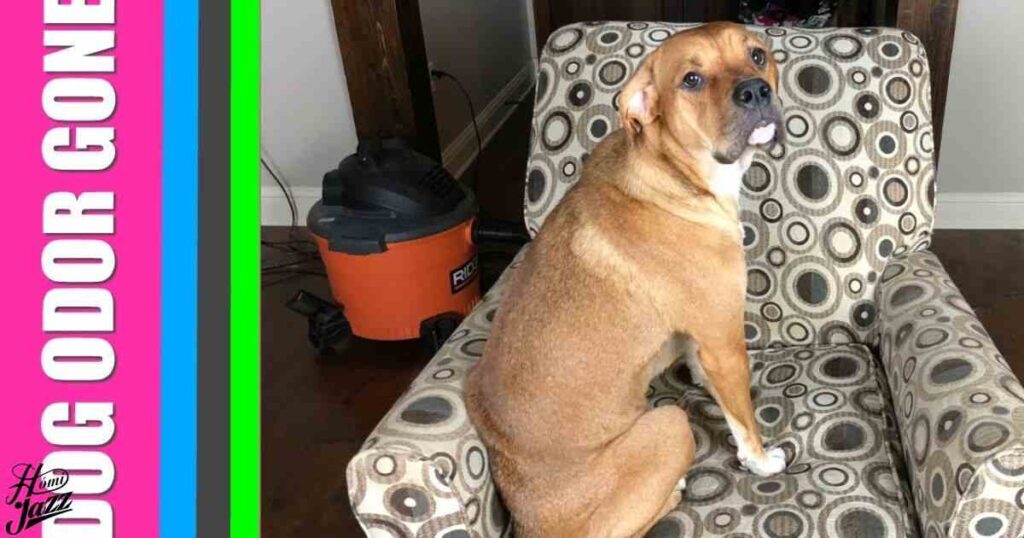
Before diving into the solutions, it’s crucial to understand the root causes of furniture smells. This knowledge will help you tackle the problem more effectively and prevent future occurrences.
Common Causes of Furniture Smells
Furniture odors can arise from a multitude of sources. Spills are a frequent culprit, especially on upholstered pieces. When liquids seep into the fabric and padding, they can create a breeding ground for bacteria, resulting in unpleasant smells. Pet accidents are another common source, leaving behind not only visible stains but also lingering odors that can be particularly challenging to eliminate.
Mold and mildew growth, often caused by high humidity or water damage, can lead to a musty smell that permeates furniture. Additionally, the natural aging process of materials used in furniture construction can contribute to odor development. For instance, the breakdown of adhesives or the oxidation of certain fabrics can release odorous compounds over time.
Types of Furniture Materials and Their Odor Absorption Properties
Different furniture materials interact with odors in unique ways. Upholstered furniture, with its porous fabrics and foam padding, tends to absorb and retain odors more readily than other materials. The fibers in fabrics can trap odor molecules, making them particularly susceptible to lingering smells.
Wooden furniture, while generally less prone to odor absorption, can still develop smells, especially if it’s been exposed to moisture or strong odors over an extended period. The porous nature of wood allows it to absorb odors to some degree, particularly in untreated or poorly sealed pieces.
Leather furniture presents its own challenges when it comes to odor absorption. While leather is less porous than fabric, it can still absorb odors, especially if not properly maintained. The natural oils in leather can break down over time, leading to a distinct smell that some find unpleasant.
The Science Behind Odor Molecules and Furniture
To truly understand how to get smell out of furniture, it’s helpful to delve into the science of odor molecules. Odors are caused by volatile organic compounds (VOCs) that are released into the air. These molecules are small enough to become airborne and interact with our olfactory receptors, resulting in the perception of smell.
When these odor molecules come into contact with furniture surfaces, they can adhere to the material through a process called adsorption. This is different from absorption, where molecules penetrate deep into the material. In adsorption, the odor molecules form a thin film on the surface of the furniture. This is why some odors can be relatively easy to remove with surface cleaning, while others, which have penetrated deeper into the material, require more intensive treatment.
The molecular structure of different odors can also impact how easily they can be removed from furniture. Some odor molecules form stronger bonds with certain materials, making them more challenging to eliminate. This is why a one-size-fits-all approach to odor removal is often ineffective, and why understanding the specific type of odor and material involved is crucial for successful odor elimination.
Preparation for Odor Removal
Now that we have a solid understanding of the nature of furniture odors, let’s explore how to prepare for the odor removal process. Proper preparation is key to effectively getting smell out of furniture.
Assessing the Extent of the Odor Problem
The first step in tackling furniture odors is to accurately assess the situation. Start by using your sense of smell to identify the affected areas. Is the odor concentrated in one spot, or does it permeate the entire piece? Try to determine the type of smell – is it musty, indicating potential mold growth, or does it smell like pet urine or smoke?
Next, visually inspect the furniture for any visible stains or discoloration that might be related to the odor. Feel the surface for any damp spots, especially in upholstered furniture, as moisture can be a breeding ground for odor-causing bacteria.
It’s also important to consider the history of the furniture. Has it been exposed to any recent spills or accidents? Was it stored in a damp basement or exposed to smoke? Understanding the furniture’s history can provide valuable clues about the source and nature of the odor.
Gathering Necessary Supplies for Odor Removal
Once you’ve assessed the odor problem, it’s time to gather the supplies you’ll need for the odor removal process. The specific items you’ll require may vary depending on the type of furniture and the nature of the odor, but here’s a general list to get you started:
- Vacuum cleaner with upholstery attachments
- Clean microfiber cloths
- Baking soda
- White vinegar
- Spray bottles
- Enzyme-based cleaner (for pet odors)
- Leather cleaner (for leather furniture)
- Essential oils (optional, for fragrance)
- Protective gloves
- Face mask
Having these supplies on hand will ensure you’re well-prepared to tackle a variety of odor scenarios. Remember, when learning how to get smell out of furniture, using the right tools can make all the difference in achieving successful results.
Safety Precautions When Dealing with Furniture Odors
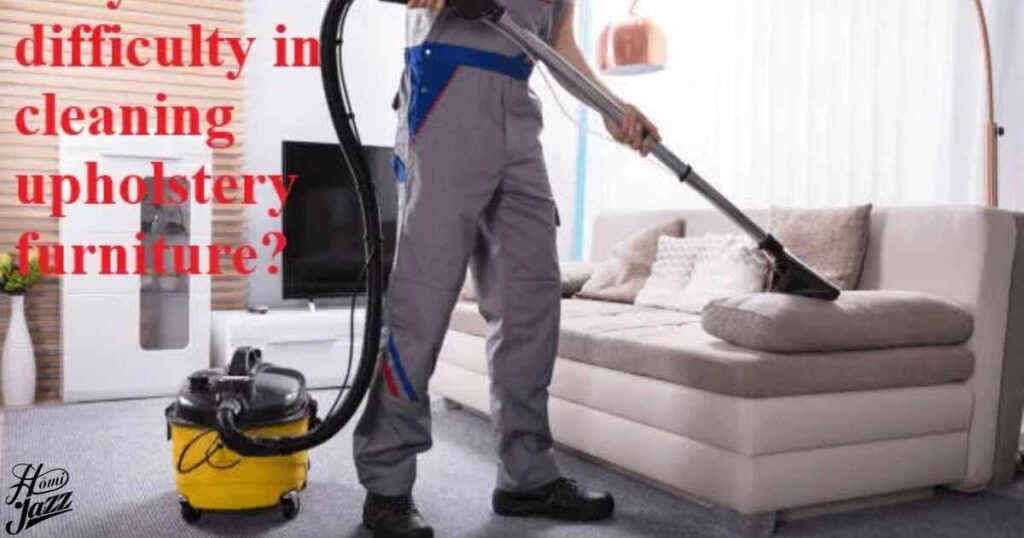
Before embarking on your odor removal journey, it’s crucial to prioritize safety. Some cleaning products and techniques can pose risks if not used properly. Here are some essential safety precautions to keep in mind:
- Ventilation: Always work in a well-ventilated area. Open windows and doors to allow fresh air circulation, especially when using chemical cleaners.
- Personal Protective Equipment: Wear gloves to protect your hands from cleaning agents and potential allergens. If you’re dealing with strong odors or using potent cleaning products, consider wearing a face mask to avoid inhaling fumes or particles.
- Allergy Awareness: If you have known allergies or sensitivities, be cautious when using new cleaning products. Test a small, inconspicuous area first to ensure you don’t have an adverse reaction.
- Chemical Safety: Never mix different cleaning products, as this can create harmful chemical reactions. Always read and follow the manufacturer’s instructions carefully.
- Electrical Safety: If you’re using electrical cleaning equipment like steam cleaners, ensure all connections are secure and keep the devices away from water sources.
- Pet and Child Safety: Keep pets and children away from the area while you’re cleaning and allow sufficient time for surfaces to dry completely before allowing access.
By following these safety precautions, you can ensure that your quest to get smell out of furniture doesn’t compromise your health or well-being.
Natural Methods to Get Smell Out of Furniture
Now that we’re prepared, let’s explore some natural methods for eliminating furniture odors. These techniques are eco-friendly, cost-effective, and often just as effective as chemical alternatives.
Using Baking Soda to Absorb Odors
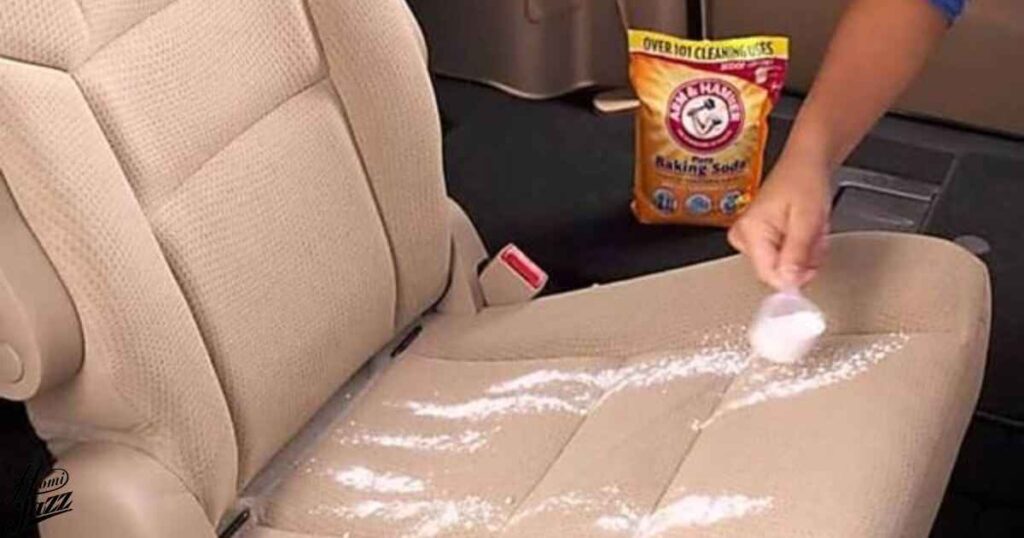
Baking soda is a powerhouse when it comes to odor absorption, making it an excellent first line of defense in how to get smell out of furniture. Its alkaline nature neutralizes acidic odor molecules, effectively “canceling out” many common smells.
To use baking soda on upholstered furniture, start by vacuuming the piece thoroughly to remove any loose dirt or debris. Then, generously sprinkle baking soda over the entire surface of the furniture. Use your hands (wearing gloves) to gently work the baking soda into the fabric, ensuring it penetrates beyond the surface.
Allow the baking soda to sit for at least 24 hours – the longer, the better. During this time, it will absorb odors and moisture from the fabric. After the waiting period, vacuum the furniture thoroughly, making sure to remove all the baking soda.
For wooden or leather furniture, you can create a paste by mixing baking soda with a small amount of water. Apply this paste to the surface, let it sit for a few hours, then wipe clean with a damp cloth.
Vinegar Solutions for Neutralizing Furniture Smells
White vinegar is another natural odor eliminator that can be highly effective in getting smell out of furniture. Its acetic acid content helps to neutralize alkaline odors, making it particularly useful for tackling smells like pet urine or smoke.
To use vinegar, create a solution by mixing equal parts white vinegar and water in a spray bottle. Lightly mist the solution over the surface of the furniture, being careful not to saturate the material. Allow the vinegar solution to air dry completely. As it dries, it will take the odors with it, leaving your furniture smelling fresh.
For wooden furniture, you can dampen a microfiber cloth with the vinegar solution and gently wipe down the surface. This method is also effective for leather furniture, but be sure to follow up with a leather conditioner to prevent drying.
It’s worth noting that while the vinegar smell itself can be strong initially, it dissipates as it dries, taking the original odors with it.
Sunlight and Fresh Air: Nature’s Odor Eliminators
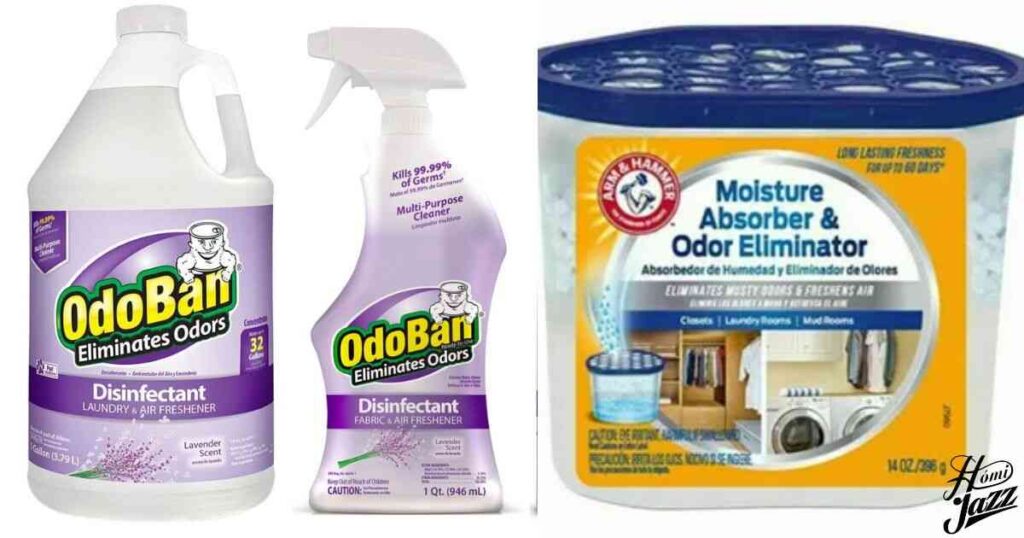
Sometimes, the most effective odor removal technique is also the simplest. Sunlight and fresh air can work wonders in eliminating furniture smells. UV rays from sunlight have natural disinfectant properties that can help kill odor-causing bacteria, while fresh air helps to dissipate and carry away odor molecules.
If possible, move your furniture outside on a sunny, breezy day. Leave it in direct sunlight for several hours, rotating it to ensure all sides are exposed. If outdoor placement isn’t an option, place the furniture near open windows where it can receive maximum sunlight and airflow.
This method is particularly effective for mattresses, pillows, and other items that are difficult to clean using other methods. However, be cautious with delicate fabrics or finishes that may fade or become damaged with prolonged sun exposure.
By incorporating these natural methods into your furniture care routine, you can effectively combat odors without resorting to harsh chemicals. Remember, the key to success is often persistence and patience – some odors may require repeated treatments before they’re fully eliminated.
Chemical-Based Solutions for Stubborn Odors
While natural methods are often effective, sometimes stubborn odors require a more powerful approach. In these cases, chemical-based solutions can provide the extra strength needed to eliminate persistent smells.
Commercial Odor Eliminators for Furniture
The market offers a wide range of commercial products specifically designed to get smell out of furniture. These products often contain enzymes or oxidizing agents that break down odor-causing molecules at a chemical level.
When choosing a commercial odor eliminator, look for products that are specifically formulated for use on furniture. Some popular options include:
- Enzyme-based cleaners: These are particularly effective for organic odors like pet urine or food spills. The enzymes in these cleaners break down the odor-causing compounds, eliminating the smell at its source.
- Activated charcoal products: These work by adsorbing odor molecules from the air and surfaces. They’re excellent for general odor control and can be placed near or on furniture.
- Ozone generators: While effective, these should be used with caution and only in unoccupied spaces, as ozone can be harmful to health if inhaled.
- Fabric refresher sprays: These products are designed to neutralize odors in fabrics and upholstery. They often contain odor-neutralizing compounds and leave behind a fresh scent.
When using any commercial product, always follow the manufacturer’s instructions carefully and test on an inconspicuous area first to ensure it doesn’t damage or discolor your furniture.
DIY Chemical Solutions for Tough Furniture Smells
For those who prefer a more hands-on approach, there are several DIY chemical solutions that can be effective in eliminating tough furniture odors. Here’s a recipe for a powerful odor-eliminating spray:
Ingredients:
- 1 cup water
- 1 cup white vinegar
- 1/2 cup vodka or rubbing alcohol
- 15-20 drops of essential oil (optional, for fragrance)
Mix all ingredients in a spray bottle and shake well before each use. The alcohol in this solution helps to break down odor molecules, while the vinegar neutralizes alkaline odors. The essential oils can provide a pleasant fragrance and may have additional odor-fighting properties depending on the oils used.
Another DIY solution involves creating an oxidizing spray using hydrogen peroxide:
Ingredients:
- 1 cup 3% hydrogen peroxide
- 1 teaspoon baking soda
- 1-2 drops of liquid dish soap
Mix these ingredients in a dark spray bottle (as light degrades hydrogen peroxide). This solution can be particularly effective for organic odors, as the oxygen released by the hydrogen peroxide helps to break down odor-causing compounds.
Remember, when using any DIY solution, always test on a small, inconspicuous area first to ensure it doesn’t damage your furniture.
Professional Odor Removal Services for Furniture

In some cases, particularly with valuable or antique furniture, or when dealing with severe odor problems, it may be best to seek professional help. Professional odor removal services have access to specialized equipment and products that can tackle even the most stubborn smells.
These services often use techniques such as:
- Ozone treatment: This involves exposing the furniture to ozone gas, which oxidizes odor molecules, effectively neutralizing them.
- Thermal fogging: This method uses a heated deodorizer that penetrates deep into furniture fibers, neutralizing odors at their source.
- Dry ice blasting: This technique uses pressurized dry ice particles to clean and deodorize furniture without the use of water or chemicals.
- Enzyme treatments: Professional-grade enzyme cleaners can break down complex odor molecules more effectively than over-the-counter products.
When considering professional services, look for companies with good reviews and ask about their specific methods for treating furniture odors. While professional services can be more expensive than DIY methods, they can be a worthwhile investment for preserving valuable pieces or dealing with particularly challenging odor problems.
By understanding these chemical-based solutions, you’ll be better equipped to tackle even the toughest furniture odors, ensuring your home remains fresh and inviting.
Specialized Techniques for Different Furniture Types
Different types of furniture require unique approaches when it comes to odor removal. Let’s explore specific techniques for upholstered, wooden, and leather furniture.
How to Get Smell Out of Upholstered Furniture
Upholstered furniture, with its porous fabrics and foam padding, can be particularly challenging when it comes to odor removal. Here’s a step-by-step approach to get smell out of furniture that’s upholstered:
- Start with a thorough vacuuming, using upholstery attachments to reach deep into crevices and remove loose particles that may be harboring odors.
- Apply a generous layer of baking soda over the entire surface of the furniture. Use a soft brush to work it into the fabric gently. Let it sit for at least 24 hours to absorb odors.
- Vacuum the baking soda thoroughly, making sure to go over each area multiple times to remove all residue.
- For persistent odors, create a solution of equal parts water and white vinegar. Using a spray bottle, lightly mist the fabric, being careful not to saturate it. Allow it to air dry completely.
- If the smell persists, consider using an enzyme-based cleaner specifically designed for upholstery. These cleaners are particularly effective for organic odors like pet urine or food spills.
- For stubborn odors, you may need to use a steam cleaner. The heat and moisture can help to release odor molecules trapped deep in the fabric and padding.
Remember, always test any cleaning solution on a small, inconspicuous area first to ensure it doesn’t damage or discolor the fabric.
Removing Odors from Wooden Furniture
Wooden furniture presents its own unique challenges when it comes to odor removal. Here’s how to approach it:
- Start by cleaning the surface with a mixture of warm water and mild dish soap. Use a soft cloth and avoid saturating the wood.
- For musty odors, create a paste using baking soda and water. Apply this paste to the surface of the wood, let it sit for a few hours, then wipe clean with a damp cloth.
- For more persistent odors, you can try wiping down the furniture with a solution of equal parts water and white vinegar. Be sure to dry the surface thoroughly afterward to prevent water damage.
- If the odor seems to be coming from inside drawers or cabinets, place small bowls of activated charcoal or coffee grounds inside to absorb the smell. Replace these every few days until the odor is gone.
- For antique or valuable wooden furniture, consider using specialized wood cleaners and polishes that not only clean but also help to seal the wood, preventing future odor absorption.
- In cases of severe odor, particularly with older pieces, you may need to sand and refinish the wood to fully eliminate the smell. This should be done carefully and may require professional assistance.
Leather Furniture Odor Elimination Techniques
Leather furniture requires special care when it comes to odor removal to avoid damaging the material.
Here’s how to approach odor elimination for leather furniture:
- Begin by vacuuming the leather surface thoroughly to remove any dust or debris. Use a soft brush attachment to avoid scratching the leather.
- For mild odors, wipe down the leather with a slightly damp cloth dipped in a solution of equal parts water and white vinegar. Be sure not to saturate the leather, as excess moisture can damage it.
- After cleaning, allow the leather to air dry completely in a well-ventilated area. Avoid direct sunlight or heat sources, which can dry out and damage the leather.
- For more stubborn odors, consider using a commercial leather cleaner specifically designed for odor removal. Always test these products on a small, inconspicuous area first.
- Once the leather is clean and dry, apply a leather conditioner to keep the material supple and prevent it from absorbing odors in the future.
- For persistent odors that seem to be coming from inside the furniture, place an open container of baking soda or activated charcoal inside or underneath the piece to absorb the smell.
- In cases of severe odor, particularly with cigarette smoke, you may need to seek professional leather cleaning services. They have specialized treatments that can penetrate deeper into the leather to eliminate odors without causing damage.
Remember, when learning how to get smell out of furniture, patience is key. Some odors may require repeated treatments before they’re fully eliminated.
Preventing Future Odors in Furniture
Once you’ve successfully removed odors from your furniture, the next step is to prevent them from returning. Here are some strategies to keep your furniture smelling fresh:
Regular Maintenance to Avoid Odor Buildup
Establishing a regular cleaning routine is crucial in preventing odor buildup in your furniture. Here are some tips:
- Vacuum upholstered furniture weekly to remove dust, pet hair, and other particles that can trap odors.
- Rotate cushions regularly to ensure even wear and prevent odor buildup in specific areas.
- Address spills and stains immediately to prevent them from setting in and causing long-term odors.
- For wooden furniture, dust regularly and apply a quality wood polish every few months to maintain the finish and prevent odor absorption.
- Clean leather furniture with a damp cloth weekly and condition it every 6-12 months to keep it supple and resistant to odors.
- Consider professional cleaning for upholstered furniture once a year, especially in high-traffic areas or homes with pets.
Creating a Furniture-Friendly Home Environment
The environment in which your furniture resides plays a significant role in odor prevention. Here are some ways to create a furniture-friendly atmosphere:
- Control humidity levels in your home. High humidity can lead to mold and mildew growth, which can cause musty odors. Use dehumidifiers in damp areas if necessary.
- Ensure good ventilation throughout your home. Open windows regularly to allow fresh air circulation, which can help prevent odors from settling into furniture.
- If you have pets, groom them regularly and keep their bedding clean to minimize pet odors transferring to furniture.
- Avoid smoking indoors, as cigarette smoke can quickly permeate furniture and is notoriously difficult to remove.
- Use air purifiers with activated carbon filters to help remove odor-causing particles from the air before they can settle into furniture.
Protective Treatments for Odor-Resistant Furniture
Applying protective treatments to your furniture can help make it more resistant to odor absorption. Consider these options:
- For upholstered furniture, apply a fabric protector spray. These products create a barrier that repels liquids and prevents stains and odors from penetrating the fabric.
- For wooden furniture, ensure it’s properly sealed. A good quality varnish or lacquer can help prevent odors from penetrating the wood.
- For leather furniture, regular conditioning not only keeps the leather supple but also helps create a barrier against odor absorption.
- Consider using furniture covers, especially in high-use areas or if you have pets. These can be easily removed and washed, preventing odors from settling into the furniture itself.
- For new furniture purchases, look for pieces treated with odor-resistant technologies. Some manufacturers now offer built-in odor protection in their furniture lines.
By implementing these preventive measures, you can significantly reduce the likelihood of having to deal with furniture odors in the future. Remember, when it comes to how to get smell out of furniture, prevention is often easier than cure.
Dealing with Specific Odor Challenges
While general odor removal techniques are effective for many situations, certain types of odors require specialized approaches. Let’s explore how to tackle some of the most common and challenging furniture odor problems.
How to Get Pet Smells Out of Furniture
Pet odors can be particularly persistent and difficult to eliminate. Here’s a comprehensive approach to dealing with pet smells in furniture:
- Start by thoroughly vacuuming the furniture to remove any pet hair and dander. Use a vacuum with a HEPA filter for best results.
- For fabric upholstery, sprinkle baking soda liberally over the surface and let it sit for at least 24 hours before vacuuming it up. The baking soda will help absorb odors trapped in the fibers.
- For urine odors, use an enzyme-based cleaner specifically designed for pet accidents. These cleaners break down the proteins in urine that cause odors. Apply the cleaner according to the manufacturer’s instructions, typically allowing it to sit for several hours before blotting dry.
- For leather furniture, wipe down the surface with a solution of equal parts water and white vinegar. Follow up with a leather conditioner to prevent drying.
- Consider using a fabric sanitizer spray that’s safe for pets. These products can help neutralize odors and kill odor-causing bacteria.
- For severe cases, you may need to clean the internal padding of the furniture. This often requires professional help, as it involves partially disassembling the piece.
- To prevent future pet odors, consider using washable furniture covers or training your pets to stay off the furniture.
Removing Smoke Odor from Furniture
Smoke odors, whether from cigarettes or fire damage, can be some of the most challenging to eliminate. Here’s how to approach this problem:
Read This Blog: Tiffany Pesci Unveiled: Inside the Life of Joe Pesci’s Daughter
- Start by airing out the furniture outdoors if possible. Sunlight and fresh air can help dissipate some of the smoke odor.
- For upholstered items, sprinkle baking soda liberally over the surface and let it sit for at least 24 hours before vacuuming thoroughly.
- Create a solution of one part white vinegar to three parts water. Lightly mist this solution over the furniture, being careful not to saturate it. The vinegar will help neutralize the smoke odor.
- For wooden furniture, wipe down all surfaces with a mixture of equal parts white vinegar and olive oil. This not only helps remove the smoke odor but also conditions the wood.
- Consider using activated charcoal or coffee grounds near the furniture to absorb lingering odors. Replace these absorbents every few days until the smell is gone.
- For severe smoke odor, especially from fire damage, you may need to use an ozone generator. However, this should be done by professionals due to the potential health risks associated with ozone exposure.
- In some cases, particularly with upholstered furniture, the smoke odor may have penetrated too deeply for DIY methods to be effective. In these instances, professional cleaning or even reupholstering may be necessary.
Eliminating Mold and Mildew Odors in Furniture
Mold and mildew odors not only smell unpleasant but can also indicate a potential health hazard. Here’s how to address these odors:
- First, identify the source of the moisture that’s causing the mold or mildew growth. Address any leaks or humidity issues to prevent the problem from recurring.
- For non-porous surfaces like wood or leather, create a solution of one cup of borax dissolved in one gallon of hot water. Use this to clean the surface thoroughly, then dry completely.
- For upholstered furniture, start by vacuuming thoroughly. Then, mix equal parts white vinegar and water in a spray bottle. Lightly mist the fabric and allow it to air dry completely.
- For severe cases, you may need to use a commercial mold and mildew remover. Always test these products on an inconspicuous area first and follow the manufacturer’s instructions carefully.
- After cleaning, place the furniture in direct sunlight if possible. UV rays can help kill remaining mold spores and eliminate odors.
- Use a dehumidifier in the room where the furniture is kept to prevent future mold and mildew growth.
- For extensive mold growth, especially if it has penetrated deep into the furniture, professional remediation may be necessary. Some furniture may need to be discarded if the mold infestation is severe.
Remember, when dealing with any of these specific odor challenges, safety should always be your first priority. Wear protective gear such as gloves and a mask, especially when dealing with mold or strong chemical cleaners. If you’re unsure about how to proceed, or if the odor problem seems too severe, don’t hesitate to consult with professional furniture cleaning and restoration services.
Read This Blog: Timeless Elegance of What is MCM Furniture?: A Comprehensive Guide
By understanding these specialized techniques for different odor challenges, you’ll be well-equipped to handle even the most persistent smells, ensuring your furniture remains fresh and inviting for years to come.
Long-Term Strategies for Odor-Free Furniture
Maintaining odor-free furniture is an ongoing process that requires consistent effort and smart strategies. Let’s explore some long-term approaches to keep your furniture smelling fresh.
Incorporating Odor-Absorbing Materials in Your Home
One of the most effective ways to maintain odor-free furniture is to incorporate materials that naturally absorb odors into your home decor. Here are some ideas:
- Place bowls of activated charcoal near your furniture. Activated charcoal is highly porous and excellent at absorbing a wide range of odors. You can find decorative bowls or sachets specifically designed for this purpose.
- Use bamboo charcoal bags. These are becoming increasingly popular due to their effectiveness and eco-friendly nature. They can be easily tucked behind cushions or placed under furniture.
- Incorporate indoor plants known for their air-purifying qualities, such as peace lilies, snake plants, or spider plants. Not only do these add a touch of nature to your decor, but they also help remove odor-causing pollutants from the air.
- Consider using zeolite, a natural mineral with a high absorption capacity. It can be found in various forms, including decorative rocks that can be displayed near furniture.
- Use beeswax candles. When burned, beeswax releases negative ions that can help neutralize pollutants in the air, including odor-causing particles.
By strategically placing these odor-absorbing materials around your home, you can create an environment that continuously works to keep your furniture smelling fresh.
Seasonal Furniture Care for Odor Prevention
Different seasons can bring different challenges when it comes to furniture odors. Here’s a seasonal guide to help you maintain odor-free furniture year-round:
Spring:
- Conduct a thorough spring cleaning of all furniture.
- Air out furniture outdoors on a dry, breezy day.
- Check for any winter moisture damage and address it promptly.
Summer:
- Be vigilant about spills and stains, as heat can cause odors to set in more quickly.
- Use fans to improve air circulation and prevent odors from settling.
- Consider using lightweight, washable slipcovers to protect furniture from sweat and sunscreen residue.
Fall:
- Clean and store any outdoor furniture to prevent mold and mildew growth over winter.
- Check your home’s humidity levels as you start using heating systems, which can dry out the air and potentially your furniture.
Winter:
- Use humidifiers to prevent wood furniture from drying out and cracking, which can lead to odor absorption.
- Be careful of odors from holiday cooking settling into furniture. Use exhaust fans and open windows when possible.
By adjusting your furniture care routine with the seasons, you can stay ahead of potential odor issues and maintain a fresh-smelling home throughout the year.
Also Read This Blog: How tall is the house in the UK? A Comprehensive 2024 Guide
When to Replace vs. Deodorize Furniture
While knowing how to get smell out of furniture is valuable, there comes a point when deodorizing efforts may no longer be effective or worthwhile. Here are some factors to consider when deciding whether to continue deodorizing or to replace a piece of furniture:
- Age of the furniture: If the piece is very old and has absorbed odors over many years, it may be more cost-effective to replace it rather than continuing to invest in cleaning and deodorizing efforts.
- Value of the furniture: For valuable or sentimental pieces, investing in professional odor removal services may be worth it, even if it’s costly.
- Extent of the odor: If the smell persists after multiple thorough cleaning attempts, it may have penetrated too deeply into the furniture to be fully removed.
- Structural integrity: If the furniture has been damaged by moisture or mold to the point where its structural integrity is compromised, replacement is likely the best option.
- Health concerns: For furniture that has been exposed to toxic substances or extensive mold growth, replacement may be necessary for health reasons.
- Cost comparison: Compare the cost of professional cleaning or restoration services with the cost of replacement. Sometimes, buying new furniture is more economical in the long run.
- Frequency of odor return: If you find yourself constantly battling the same odor despite regular cleaning and deodorizing efforts, it may be time to consider replacement.
Frequently Asked Question
What are the most effective ways to get smell out of furniture?
The most effective methods include using baking soda, white vinegar solutions, enzyme cleaners for organic odors, and exposing furniture to fresh air and sunlight. For stubborn odors, commercial odor eliminators or professional cleaning services may be necessary.
How long does it take to remove odors from furniture?
The time required can vary greatly depending on the severity of the odor and the method used. Simple treatments like baking soda may take 24-48 hours, while more intensive treatments or professional services might require several days to fully eliminate odors.
Can all types of furniture smells be eliminated?
Most furniture odors can be significantly reduced or eliminated with proper treatment. However, extremely severe or long-standing odors, particularly those that have penetrated deep into the furniture’s structure, may be very difficult or impossible to remove completely.
Is it safe to use chemical odor eliminators on all furniture types?
Not all chemical odor eliminators are safe for all furniture types. Always check the product instructions and test on a small, inconspicuous area first. For delicate or valuable furniture, it’s best to consult with a professional cleaner.
How often should I deodorize my furniture to prevent odor buildup?
Regular cleaning and maintenance can prevent most odor buildup. Vacuuming upholstered furniture weekly, addressing spills immediately, and doing a deep clean every 6-12 months can help keep odors at bay. If you notice any smells developing, address them promptly to prevent them from setting in.
Conclusion
While it’s often possible to remove even stubborn odors from furniture, there are times when replacement is the most practical solution. By carefully evaluating these factors, you can make an informed decision about whether to continue deodorizing or to invest in new, odor-free furniture.
Maintaining odor-free furniture is an ongoing process that requires a combination of regular care, strategic planning, and sometimes difficult decisions. By implementing these long-term strategies, you can enjoy fresh, inviting furniture that enhances the comfort and appeal of your home for years to come.

Howdy is behind this home blog, sharing personal stories, thoughts, and insights from daily life. I can dedicated to bringing you the latest trends, expert advice, and creative ideas to make your home the sanctuary you’ve always dreamed of. Whether you’re looking for DIY tips, home decor inspiration, home loans, rentals or renovations.

